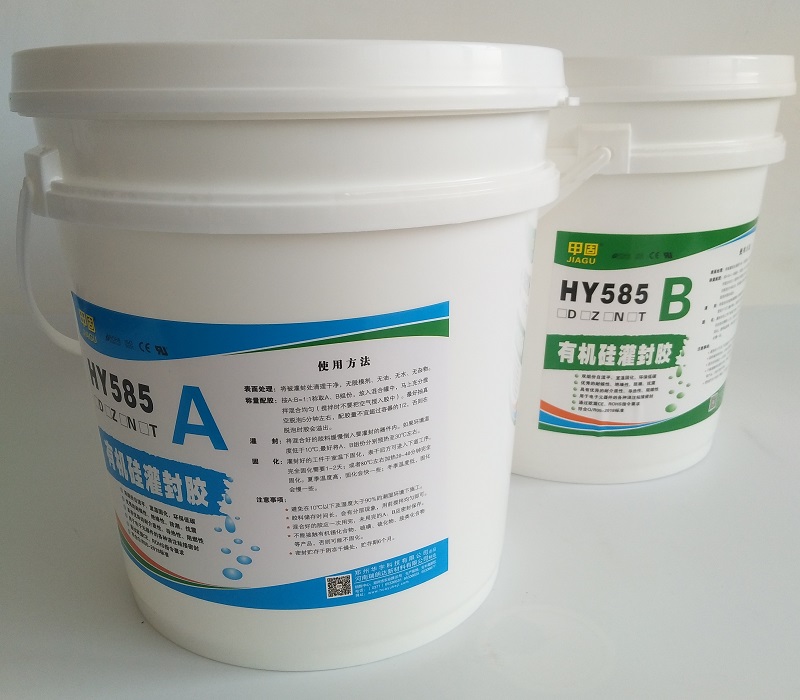The quality of sealed products is closely related to product design, component selection, assembly, and the sealing materials used. The sealing process is also an important factor that cannot be ignored. There are two types of epoxy sealing processes: normal and vacuum sealing. Epoxy resin Amine room temperature curing potting material is generally used for low-voltage electrical appliances and is often used for normal potting. Epoxy resin Anhydride heating curing sealing material is generally used for sealing high-voltage electronic devices, and vacuum sealing technology is often used. At present, there are two common methods of vacuum sealing: manual vacuum sealing and mechanical vacuum sealing. Mechanical vacuum sealing can be divided into two situations: A and B components are first mixed and defoamed before sealing, and then separately defoamed before mixed sealing.
& nbsp; & nbsp; The quality of sealed products is closely related to product design, component selection, assembly, and the sealing materials used. The sealing process is also an important factor that cannot be ignored. There are two types of epoxy sealing processes: normal and vacuum sealing. Epoxy resin Amine room temperature curing potting material is generally used for low-voltage electrical appliances and is often used for normal potting. Epoxy resin Anhydride heating curing sealing material is generally used for sealing high-voltage electronic devices, and vacuum sealing technology is often used. At present, there are two common methods of vacuum sealing: manual vacuum sealing and mechanical vacuum sealing. Mechanical vacuum sealing can be divided into two situations: A and B components are first mixed and defoamed before sealing, and then separately defoamed before mixed sealing. There are three methods of operation:
& nbsp; & nbsp; 1. Single component electronic sealing adhesive, can be used directly, can be applied by pressing or poured directly;
& nbsp; & nbsp; 2. Two component condensation type electronic sealing adhesive, curing agent 2% -3% or other ratios, stirring vacuum defoaming infusion;
& nbsp; & nbsp; 3. Add electronic sealing adhesive, curing agent 1:1, 10:1;

& nbsp; & nbsp; Electronic sealing adhesive sealing process flow;
& nbsp; & nbsp; A. Manual vacuum sealing process;
& nbsp; & nbsp; B. Mechanical vacuum sealing process
& nbsp; & nbsp; 1. Measurement: Accurately weigh component A and component B (curing agent).
& nbsp; & nbsp; 2. Mixing: Mix the components together;
& nbsp; & nbsp; 3. Defoaming: natural degassing and vacuum degassing;
& nbsp; & nbsp; 4. Pouring: The adhesive should be fully poured within the operating time, otherwise it will affect leveling;
& nbsp; & nbsp; 5. Curing: Heating or room temperature curing, the sealed product is cured at room temperature, and after initial curing, it can enter the next process. Complete curing takes 8-24 hours. In summer, the temperature is high and the curing process will be faster; The temperature is low in winter, and the curing process may be slower< br />
nine hundred and one
& nbsp; & nbsp; Precautions for Electronic Sealing Adhesive Sealing
& nbsp; & nbsp; The surface of the sealed product must be cleaned before sealing!
& nbsp; & nbsp; 2. Pay attention to thoroughly stirring components A and B before weighing, so that the pigment (or filler) that sinks to the bottom is dispersed into the gel solution.
& nbsp; & nbsp; 3. The primer should not be directly mixed with the adhesive material. The primer should be used first, and after the primer is dry, the adhesive material should be used for sealing.
& nbsp; & nbsp; The curing speed of the adhesive is somewhat related to temperature, and curing will be slower at lower temperatures.
& nbsp; & nbsp; In contrast, mechanical vacuum sealing requires larger equipment investment and higher maintenance costs, but it is significantly superior to manual vacuum sealing processes in terms of product consistency and reliability. Regardless of the sealing method, the set process conditions should be strictly followed, otherwise it is difficult to obtain satisfactory products.
